Rabbit Hole #4: Dishwashers
Thirty years on this planet and I've never really looked into how dishwashers work — until now 🍽
Today I’m going to solve a long-standing personal mystery. How do dishwashers work, exactly?
Let’s start with what I know. A dishwasher is this big box that you put dishes in. Then you add one of those detergent tablets that look like a cross between candy, pills, and terrazzo countertops:
You then select a wash cycle, press the start button, and wait. Something happens, and an hour or two later your dishes are clean (hopefully).
What is the nature of that something?
Obviously it involves spraying hot water on the dishes, as evidenced by the fact that if you open the dishwasher mid-cycle, there’s hot water all over the place. Also the dishes are warm right after the cycle is done. Sometimes water has accumulated on improperly placed items. (Usually this water is fairly disgusting.)
I also assume that the propeller-shaped things have something to do with the spraying. You want to spray water on all parts of the dishes, to remove all the food. A spinning thingy can presumably hit more parts than a static water jet.
But what does the candy/terrazzo tablet do, exactly? How does the machine ensure that everything gets sprayed? What happens with the little bits of food left on the dishes? What do all those noises mean?
Let’s do some research (by which I mean reading Wikipedia and HowStuffWorks and Explain that Stuff). In the meantime, here’s an intermission.
Intermission
Did you know that the first commercially successful dishwasher was invented in 1886 by a Chicago socialite named Josephine Garis Cochran(e)?1 She was annoyed that some of her precious china was damaged when her servants cleaned it, so she built a machine to perform the task. Funny to think that the initial impetus was to keep dishes intact, and only secondarily save housework time.
Josephine founded a company, the Garis-Cochran Manufacturing Company, and sold dishwashers to restaurants and hotels (which had hot water, unlike most people at the time). Later the Garis-Cochran Manufacturing Company became part of KitchenAid and they introduced a household dishwasher based on the design in 1949, when hot water become a basic feature of American life.
Her machine consisted of a motor, a pulley-driven pump, and a rack for the dishes:
A more complex version:
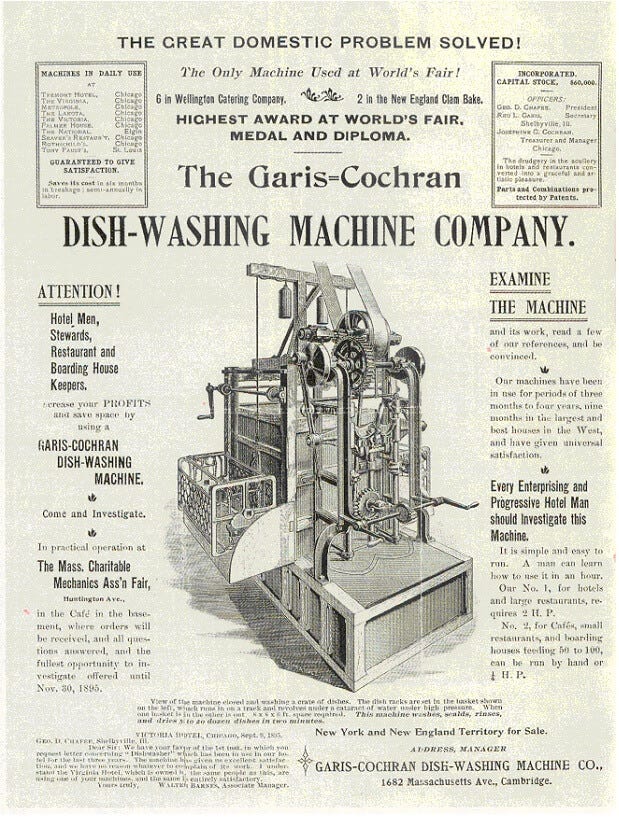
Josephine Garis Cochran(e) died in 1913 and has been part of the hall of fame of American inventors since 2006.
And with that, my research is done. Let’s go back to the main program.
How dishwashers work
The most interesting part of the Wikipedia page about dishwashers is definitely this video:
It’s a clear dishwasher! So we can actually know what’s going on inside! How cool is that.
It looks like what’s going on inside is… just a lot of water being sprayed everywhere. I, uh, don’t know what else I was expecting.
There are three propeller-shaped thingies, one at the bottom, one between the racks, and one at the top (this one seems anomalous, I don’t think it exists in most dishwashers). They’re sending water all over the place. To me this looks like a brute-force solution. Your dishes are gonna be clean because there’ll be waaaay too much detergent-laden water for them not to be.
Speaking of which, what is dishwasher detergent? First, it’s not dishwashing liquid, as I learned the time a friend put some of that in a dishwasher, causing quite a bit of foam. Detergent are basically a mix of several ingredients: phosphates to prevent limescale deposits (often banned), bleaching agents to break up bits of food, non-ionic surfactants to emulsify fats and lower the surface tension of water, alkaline salts to dissolve grease, enzymes to digest proteins and fats (yeah, like enzymes in your body also used in laundry detergent), sodium silicate to prevent corrosion, and other stuff like perfume. Really cheap detergents can even include sand, which, well, is really cheap and to be avoided.
What happens concretely when you start up the machine is that the bottom first gets filled with water (with some noise involved). The water warms up with a heating element. So apparently a dishwasher doesn’t use your house’s hot water tank’s water. The temperature is also warmer than what you’ll typically use in hand washing: 60 °C (or 140 °F), which actually kills pathogens and makes dishwashers more hygienic than hand washing.2 Dishwashers also use less water and energy overall, which means they’re an all-around superior option, well, except to wash stuff that isn’t dishwasher safe.
When the water’s heated, the detergent is added, and then a pump sends the mix to the propeller-shaped things, making them spin. The bottom one is usually made of metal, and the top one of plastic, because the water is slightly cooler when it reaches the top. (Mine are both plastic though.) Once the water has been sprayed, it falls to the bottom and can be recycled a bunch of times.
After that, the water is evacuated (cue water draining sounds), together with whatever small bits of food were removed during the wash. In high-end models, large pieces of food can be taken care of by a garbage disposal device (more noise!). New water is brought to rinse the dishes (which I assume only means more watery sounds).
The interior is hot enough that the dishes will dry naturally, but you can ask some machines to add extra drying with heat or a fan. In may experience that doesn’t work for plastics. My plastics always end up full of water droplets and need to dry outside. It’s a property of the material, it seems. Stupid plastics.
Yay I now know everything I wanted to know
We could dig deeper on the topic of dishwashers. I didn’t mention rinse aid liquid at all. Or heavy-duty commercial dishwashers. Or all the studies comparing automatic dishwashing to hand washing in terms of environmental impact. Or the cultural attitudes toward these machines — Asians, as I learned from living with one, tend not to use them except as drying racks.
But to be honest I’m pretty bored now, and I have a better idea of how dishwashers work, which is fine with me. And now you know too. Yay.
Unclear whether her name takes a final e or not
Also that’s hot enough to cook some foods. For example dishwater salmon. Yes it is very weird that this exists.


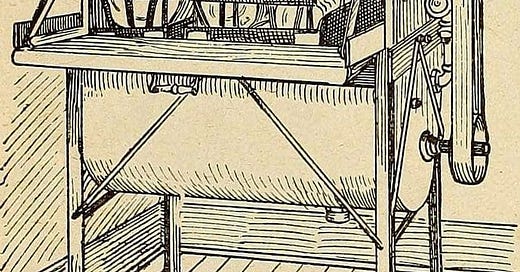


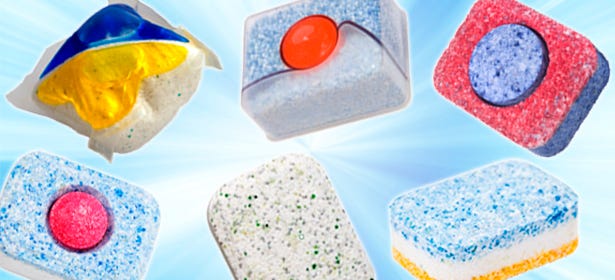
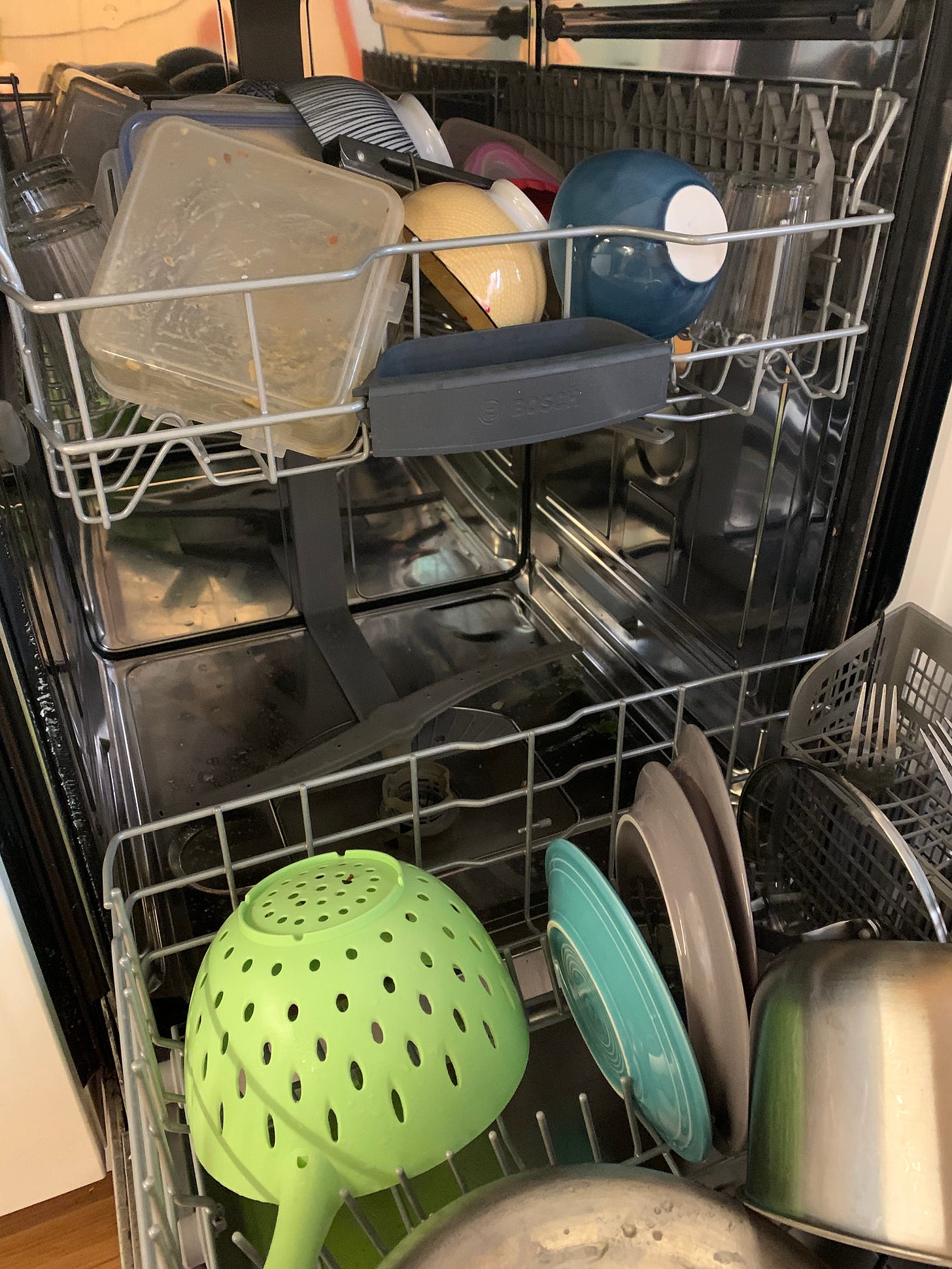


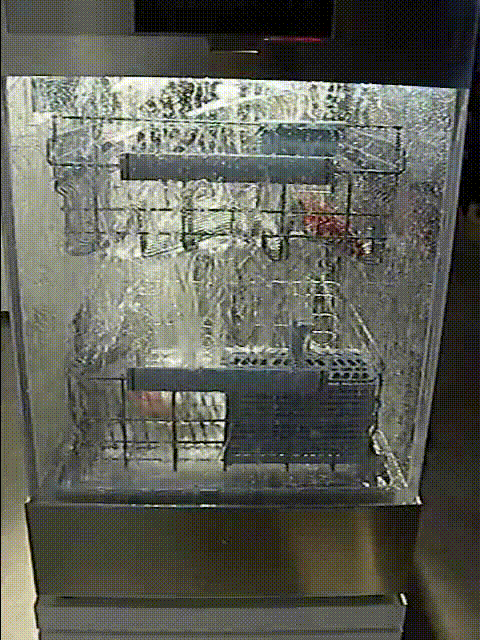
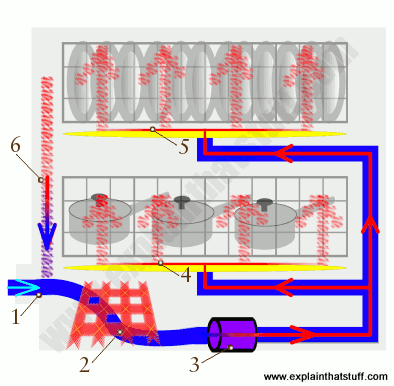
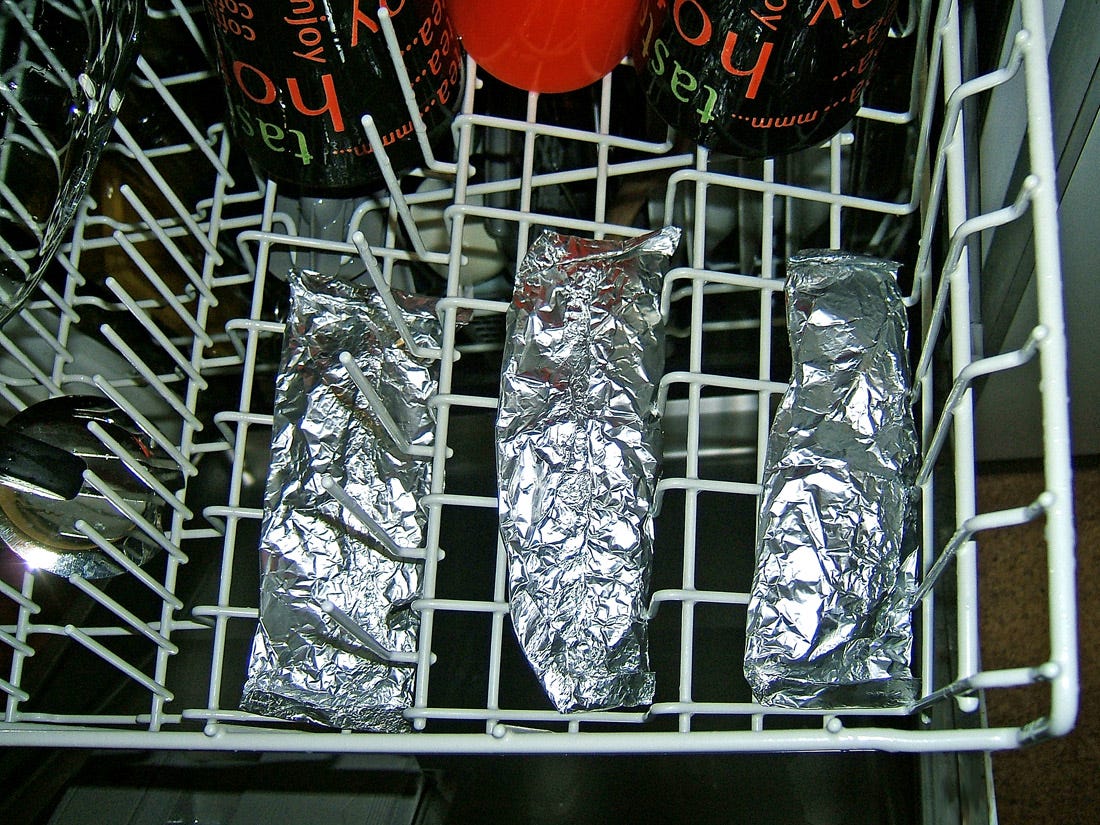
YES! I love this. A secret that a dishwasher repairman shared with us recently: if your dishes don't get clean with just the cute little packet, it's because that's not how dishwashers work. The door with the packet only opens after the first rinse, which means you're just spraying water at the dishes instead of getting all the gunk off like you could. So powder may actually be better, because you can put the prewash portion on the outside of the little door and the wash portion on the inside. We've solved this problem by putting some powder in the bottom and a packet inside the door.
Another secret is that some dishwashers don't actually have the heating element in the bottom, so you might get cleaner dishes if you heat up the water at your faucet before you start your dishwasher.